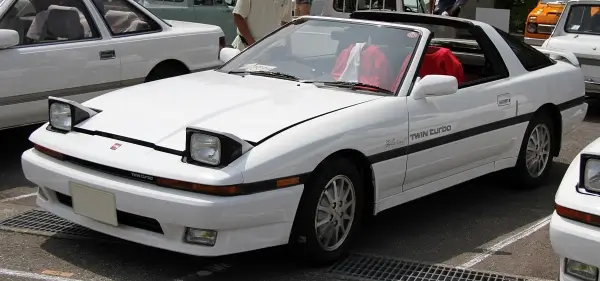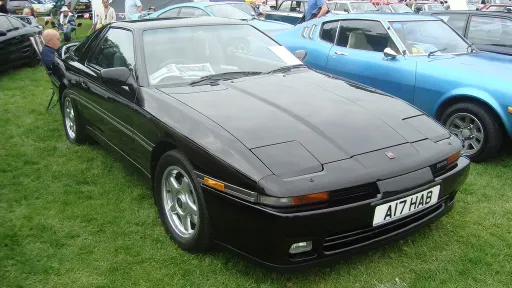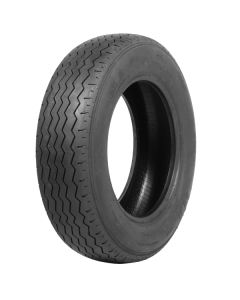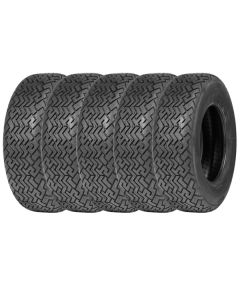Toyota Supra Tyres

1981 Toyota Supra 1st Generation
Toyota Supra 1979–2002
- The first and second generation of Toyota Celica Supra A40 and A50 (1979–1986) fitted 195/70 R14. We would recommend fitting the 195/70 VR 14 PIRELLI CINTURATO CN36.
- The Celica XX, the JDM (Japanese Domestic Market) model of Celica Supra, fitted 185/70 R 14 tyres. For this size, we recommend the 185/70 VR 14 PIRELLI CINTURATO CN36. For this tyre, the Michelin 14E is the ideal innertube.
- 2.8 Celica Supra cars from 1984 on fitted 225/60 R14. Currently, the only tyre in this size is a 225/60 SR 14 B.F.Goodrich Radial T/A.
- Tyres with a profile below 70% (e.g. 225/60 SR 14 B.F. Goodrich Radial T/A) should not fit innertubes.
- In 1986, when the third generation Supra A70 became a standalone model, separate from the Celica, it moved to 16" wheels, with all models fitting 225/50 R16 . We recommend the 225/50 YR 16 PIRELLI CINTURATO P7. The 3.0L Celica Supra also fits this size tyre.
- In 1993, the 225/50 R16 was kept as the front tyre for the Fourth Generation Supra A80, while 245/50 R16 tyres fitted to the rear. Unfortunately, no classic tyre manufacturer makes a tyre of this size.
- The rear tyre was changed in the 1997 model to 245/45 R16, we recommend the 245/45 YR 16 PIRELLI CINTURATO P7.
- The Supra Turbo fitted a 235/45 R17 tyre on the front and a 255/40 R17 tyre on the rear. Sadly, no classic tyre manufacturer currently makes a tyre for either size.

1986–1988 Toyota Supra Aerotop

1997 Toyota Supra 4th Generation
Toyota Supra Tyre Pressure Guide:
| Model | Year(s) | Front (psi) | Rear (psi) |
|---|---|---|---|
| 2.8 Celica Supra | 1981-83 | 30 | 30 |
| 2.8 Celica Supra | 1984-86 | 30 | 30 |
| 3.0 Celica Supra | 1986 | 38 | 38 |
| Supra | 1990 | 33 | 36 |
| Supra Turbo | 1990 | 44 | 44 |
| Supra 3.0i | 1993 | 43 | 43 |
| Supra Turbo | 1993 | 43 | 43 |
| Supra | 1997 | 36 | 36 |

Some Useful Celica Supra Specifications
History of the Toyota Supra

1986 Toyota Supra MA70 Liftback
The Supra started as the Celica Supra, taking a lot of features from it and adapting upon its design throughout the generations to become its own magnificent sports car.
The original design of course takes a lot from the Celica, including its name. The original body styling was essentially a Celica Liftback coupe with extended front panels to accommodate the larger engine it was fitted with. This engine was a call-back to the original Toyota supercar, the 2000GT, as it was an updated version of that engine. This engine, in particular, was a longitudinally-mounted straight 6, 2-valve, single overhead camshaft engine with fuel injection, titled, the 4M-E (The M referring to Toyota's straight 6 engine family). The Supra marked further advancements in Toyotas venture into sports cars, the Celica was the first step, the Supra the second.
Speaking of seconds, the second supra went through a lot of changes, the extended front end seen on the previous Celica was now redesigned into its own personal trim, also featuring pop-up headlights. In 1982 Lotus and Toyota came to an agreement to share designs and technology, resulting in help from Lotus in building the new Supra MK2 and the Toyota MR2, and Toyota supplying components for the Lotus Excel. Lotus also designed the independent suspension system specifically for this car. This brief venture with Lotus allowed Toyota to really get a good grip on the advancement of their sports cars, with both the Celica Supra MK2 and the MR2 being a great success for Toyota, and ultimately, just brilliantly made sports cars.

The MK2 Celica Supra was also the world's first car to fit a navigation computer!
In its third generation in 1986, the Supra cut the Celica part out of its name, becoming two different models. The Celica would pursue high-performance in the GT-4 from this point while the Supra would issue Turbo models in the future, with the GT-4 showing success in rallying, and the Supra Turbo-A having mixed success in touring racing. In this generation, the Supra swapped to front-wheel drive fitted a new 3.0L straight-six, initially with only natural aspiration, however, turbo versions were released in 1987.
The fourth-generation Supra was redesigned with an emphasis on becoming more of a high-performance based car than prior models were. These were fitted with the new JZ style engines, which were the upgraded spec straight 6's that were produced in 1990. The 3.0L double-overhead camshaft engines used in the Supra were also used in the Lexus GS300 although, they were both naturally aspirated until the Supra MK4 Turbo was released in 1997 with a twin-turbo slapped in there with a six-speed transmission as a handy bonus.
Sadly due to the decline in popularity of sports coupes in North America, alongside Yen being a stronger currency than most of its export countries, the Supra was pulled from exportation in 1998, eventually, in 2002, domestic production also ceased due to emission standards. Ultimately this car has proved itself to be a true cult car, it's a modern classic for sure. Popularity has increased even more following the reissuing of the Supra nameplate in 2019. Japanese sports cars have soared in popularity as the generation that saw them in various media growing up, Fast and Furious being a fine example, are now of the age where they can go out and buy these cars should they want to, and many of them do because of their reliability, performance, build quality, and customizability.






















